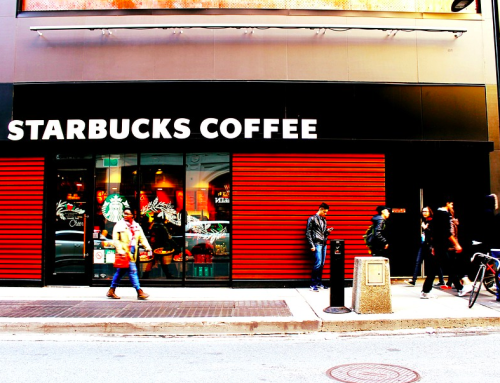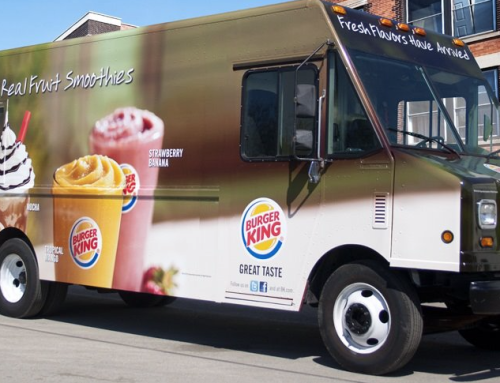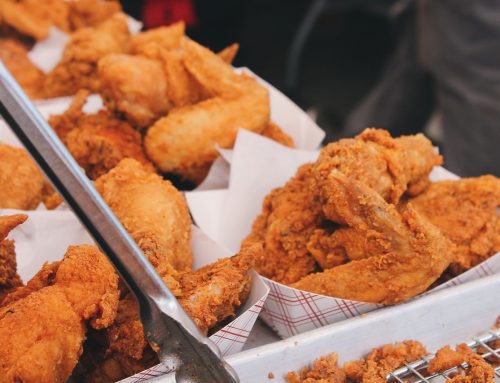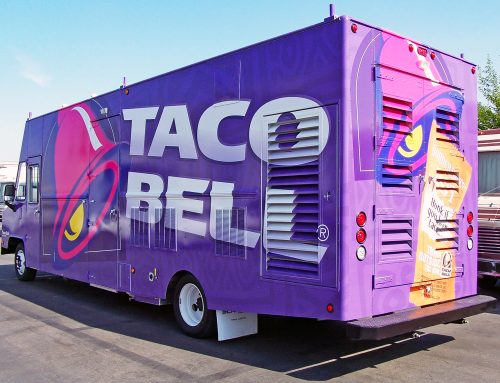DoorDash is an online food ordering and food delivery service launched by four Stanford University students in 2013. The service was originally named Palo Alto Delivery but was later changed to DoorDash to have broader appeal. Today, it’s considered the country’s largest food delivery company with a 56% market share and a 60% market share in the convenience delivery category.
By 2020, DoorDash already signed on 450,000 merchants to serve 20,000,000 customers. But in a crowded marketplace of other food delivery companies like GrubHub, Uber Eats, Delivery Hero, and PostMates, the company will need to execute flawlessly to remain relevant over the next decade.
In this SWOT analysis, I break down the unique strengths that propelled the company to be a leader within a tough space. I’ll also break down some little-known threats that are on the horizon for the company. I hope I’m able to deliver on the business analysis of this food delivery service.
SWOT Analysis:
Strengths
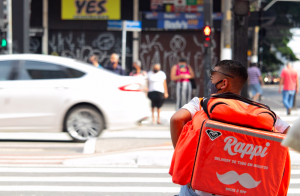
Can DoorDash continue to deliver considering the competition.
In this section, I list the strengths that has allowed DoorDash to become a leader in food delivery.
User-friendly mobile app – When the founders of DoorDash first started, their goal was to help small businesses grow and provide a “FedEx-like” service for food delivery. Available in both the Apple App Store and Google Play, the DoorDash app is user-friendly with a minimal learning curve: this means it’s very convenient for customers to order and for restaurants who have limited seating or have no means to deliver, to join the company’s over 59,000 restaurants listed on the app. This makes it easy for ma-and-pa restaurants to join the platform and start generating sales.
Low-cost delivery fees for consumers – One of the main reasons DoorDash was founded was to offer affordable convenience to customers. As a food delivery service, you can expect DoorDash to charge a delivery fee of about 10% or 11% of your order subtotal, depending on the order location.
In some regions, DoorDash has a subscription program called DashPass that offers a $0 delivery fee and reduced service fees for its subscribers. Offering this type of subscription program attracts customers and encourages them to order through the app knowing they’ll be rewarded with every transaction.
Related Reading: Taco Bell SWOT Analysis: The Overlooked Opportunities / Risks
Large network of restaurants, customers, and riders – In order to better serve its customers, DoorDash allows users to order from unaffiliated merchants. This user focused approach makes it easier for diners to explore all the food options available in their area.
Flexible schedule and financial stability for employees – DoorDash understands the need to create job opportunities especially in the midst of an extremely tight job market where it isn’t always easy to bring on new employees. Because of this, DoorDash allows riders to work part-time and still collect unemployment benefits. Employees can also enjoy a flexible schedule while working hard to have financial stability for themselves or their families. This makes DoorDash appealing to the individual delivery drivers that power the app.
Weaknesses
DoorDash has made waves the last few years, but it hasn’t always been a smooth ride. In this section, I address the company’s weaknesses that could hurt the brand down if no action is taken.
Lack of brand loyalty due to high competition – DoorDash is a young company compared to its top competitors with less than a decade in the industry. Being in such a tough industry with popular food delivery services, it can be difficult for DoorDash to prevent customers to joining rival apps. After all, the competition is only a free download away with many rivals offering deep discounts to sign up.
With so many choices and attractive promos by other companies, DoorDash needs to up its game to attract new customers and retain existing ones. People are also actively looking for food delivery services that offer less delivery fees while having more restaurant options.This can cut into company revenue.

What’s your favorite food to get delivered?
Mistakes from drivers or merchants can reflect badly on the company – As a food delivery company, DoorDash mainly depends on drivers to deliver orders to the customers. But sometimes, it’s inevitable that late drivers and wrong orders can have a negative effect on the company. While it’s not a direct attack on DoorDash, if customers feel like they’re not getting what they paid for in terms of food or service, they are most likely to try a different food delivery service available.
Limited number of drivers during peak times leads to delays – People like convenience and nowadays, more and more customers would choose to order food online and have it delivered to their homes than have them dine-in. This is what sparked food delivery companies like DoorDash. However, one of the most common problems in food delivery apps is when there are limited drivers during peak hours when more customers are ordering. This leads to delay and dissatisfaction of the customers. DoorDash needs to hire more drivers to cover peak hours where a surge of customers is more likely to come in and order. Hiring could be easier said than done in this tight labor market.
A flexible approach means driver retention is a problem – I mentioned earlier that DoorDash offers flexible schedules for their drivers and while this is considered as one of their strengths, it can also be a weakness. The flexible approach allows drivers to decide what schedule they’re going to take on certain days. This means that although they go to work at their desired time and day. This also makes it easier for drivers to leave and find a more stable job later.
Opportunities
DoorDash is doing well despite the pandemic and although there are some hiccups along the way, the company has stood its ground and remained one of the country’s best in terms of food delivery service. To further improve the company and continue its growth, these are opportunities the company should investigate further.
Available in 1,000+ cities in North America with room for expansion – Expansion is an important aspect of success especially for food delivery services like DoorDash. The bigger area you’re covering, the more customers you can serve and the more fees you can collect.
DoorDash is already doing great being able to service more than 1,000 cities in the country. In 2019, DoorDash was the first to offer on-demand destination food delivery to all 50 states. It’s one of the company’s major milestones and if they continue to expand their service in other parts of the country and even internationally.
Partnered with major brands – In 2017, Wendy’s and DoorDash announced their partnership to bring customers what they’ve been craving. Both companies have piloted their partnership across 135 restaurants in Columbus, Ohio, and Dallas which are reported to have highly rated customer satisfaction. In 2020, KFC announced its exclusive partnership with DoorDash after a deal with Grubhub fell apart.
Related Reading: SWOT Analysis for Red Bull: The Overlooked Threat of this Energy Drink
This partnership opened 3,000 locations and the company became KFC’s largest delivery partner that covers 75% of its stores in the US. Deals with major brands like KFC and Wendy’s have made a good reputation for DoorDash as it expands and reaches more customers as they serve more locations. In the future, DoorDash can continue to partner with major, popular brands to further improve their brand image and expand the places they serve.
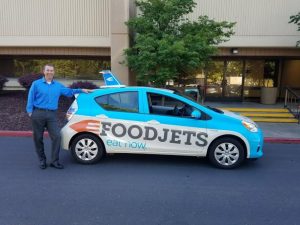
FoodJets is a competitor to DoorDash.
The business model allows for expansion beyond food – According to one of the founders, they are a logistics company more than a food company that tackles some of the most difficult logistics challenges when it comes to food delivery. They know operations and engineering like the back of their hands.
As one of the country’s leading logistics platforms, it is possible for the company to go beyond food which they have started venturing in March 2021 when DoorDash announced their collaboration with Vault Health to provide same-day distribution of COVID-19 PCR tests collection kits. If they continue to leverage their specialty to work with other companies and provide logistics and delivery services, they are looking at a brighter future that goes beyond food delivery.
Threats
For a company like DoorDash that has figured out the way to go about in this industry and stay on top, the threats I’ll be listing would act as a punching bag to make the company stronger and more ready to face any difficulties in the future. As part of the food delivery industry, companies are faced with threats like shifting customer preferences, unstable market prices, managing customer expectations, and more. But for DoorDash, I’ll be discussing some of the threats that directly impact delivery services.
Additional costs will occur once their drivers are reclassified as employees – If you want to be one of DoorDash’s drivers, you can actually apply as an independent contractor which means you are your own boss and you can set your work schedule as you please. But once the federal law classifies DoorDash drivers as employees, a lot of things will change not just for these contractors but for the company itself. Additional cost will incur for every driver turned employee and would force DoorDash to fork out a chunk of money once this happens.
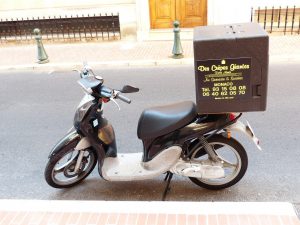
Your pizza has arrived.
Meeting the needs of drivers, customers, and business simultaneously – One of the main reasons DoorDash has celebrated a huge success is the fact that they are good at audience segmentation. They know their audience very well and classify them as first, the users, second is the businesses or restaurants, and third, the drivers.
Juggling to keep all three segments happy is not an easy task. One way or another, they will be able to fulfill the needs and expectations of their users and businesses but not their drivers. It’s a constant battle and DoorDash must learn to adjust and make the app mutually beneficial for all parties.
Legal issues when it comes to parking regulations for drivers – Some DoorDash drivers have complained about receiving parking tickets for parking in the “commercial vehicle only” area. It is technically illegal to park in commercial vehicle-only areas especially if one has no commercial plate or license.
Because drivers use their personal bikes and cars for delivery, they can’t be given commercial plates or licenses and get parking tickets to add up to the drivers’ expenses. DoorDash must find a way to work around this either by providing drivers their own bikes and vehicles or working with states about commercial vehicle parking laws.
Competitors
Although DoorDash is enjoying being at the top of the food delivery industry, one wrong move can pull them down as tough competitors are always ready to move into the top position. Let’s take a look at the competitors working toward their come up.
Uber Eats was launched within the same year of DoorDash and both companies are from the same city. Today, Uber Eats is operational in more than 6,000 cities in 45 countries and owns the second largest market share of 23%.
Grubhub was founded in 2004 in Chicago, Illinois. The company first started to provide easy access to restaurants in Chicago but later on expanded thanks to their multiple acquisitions like DiningIn, Seamless, Eat24, and Delivered Dish.
Related Reading: Dunkin’ Donuts SWOT Analysis: The Hidden Weakness
So far, the company has 9.18 million active users, almost 300,000 daily orders, and 75,000 restaurant partners. GrubHub is also used in over 1,100 cities across the US and the UK.
Next up is Delivery Hero, a German online food delivery service based in Berlin, Germany. As of 2019, Delivery Hero is used in over 40 countries and has partnered with more than 250,000 restaurants across five continents. What made Delivery Hero a successful food delivery company is its use of emotive marketing to communicate to its customers on a highly personal level. They concluded the third quarter of 2021 with a total segment revenue increase of 89%, having a total of 1.8 billion euros.
Food delivery has a global market value of more than $150 million and the food delivery ecosystem continues to grow and expand. Being in such a tough industry, companies must continue to work their way up by improving their service and offering promos to attract new customers who want to use a food delivery service.

